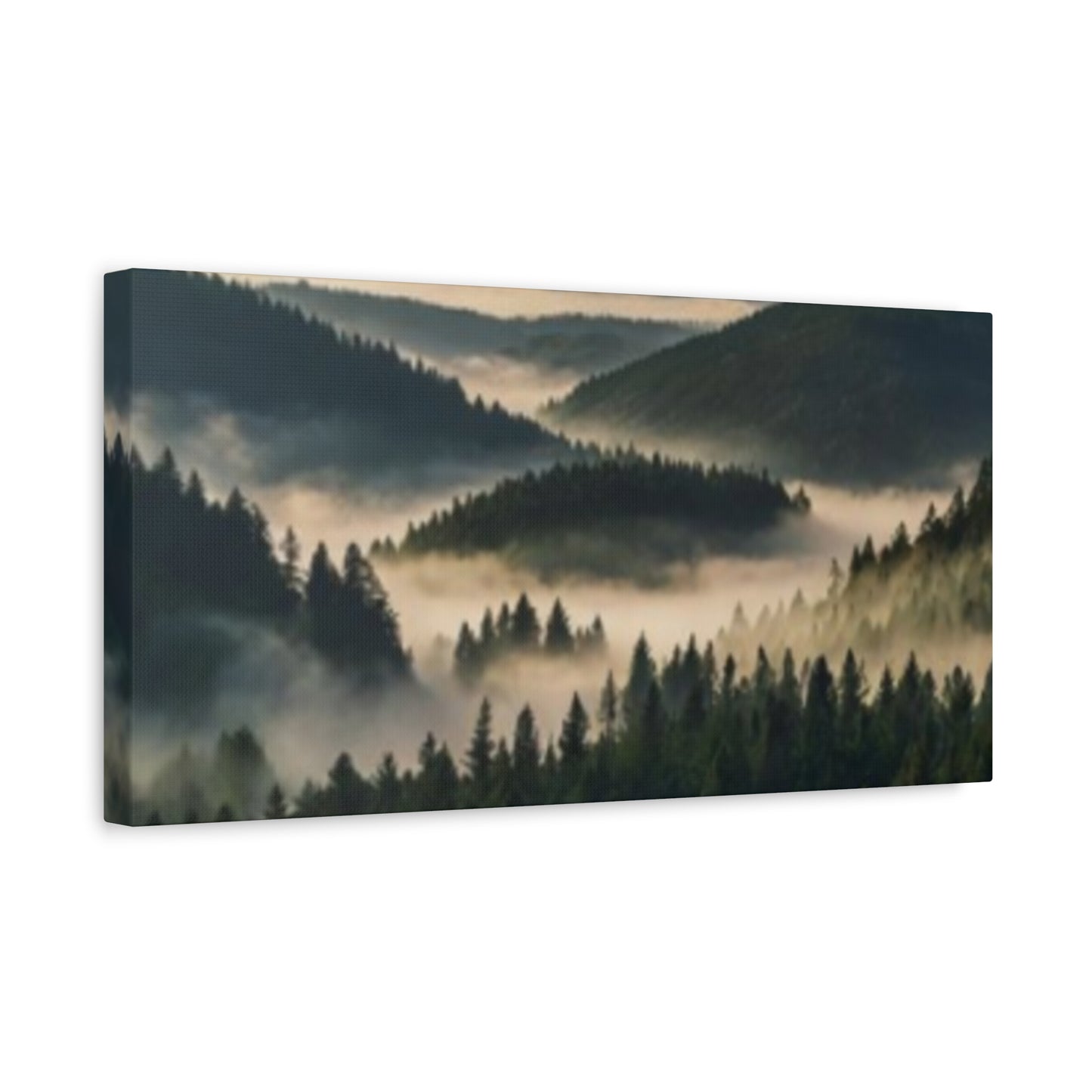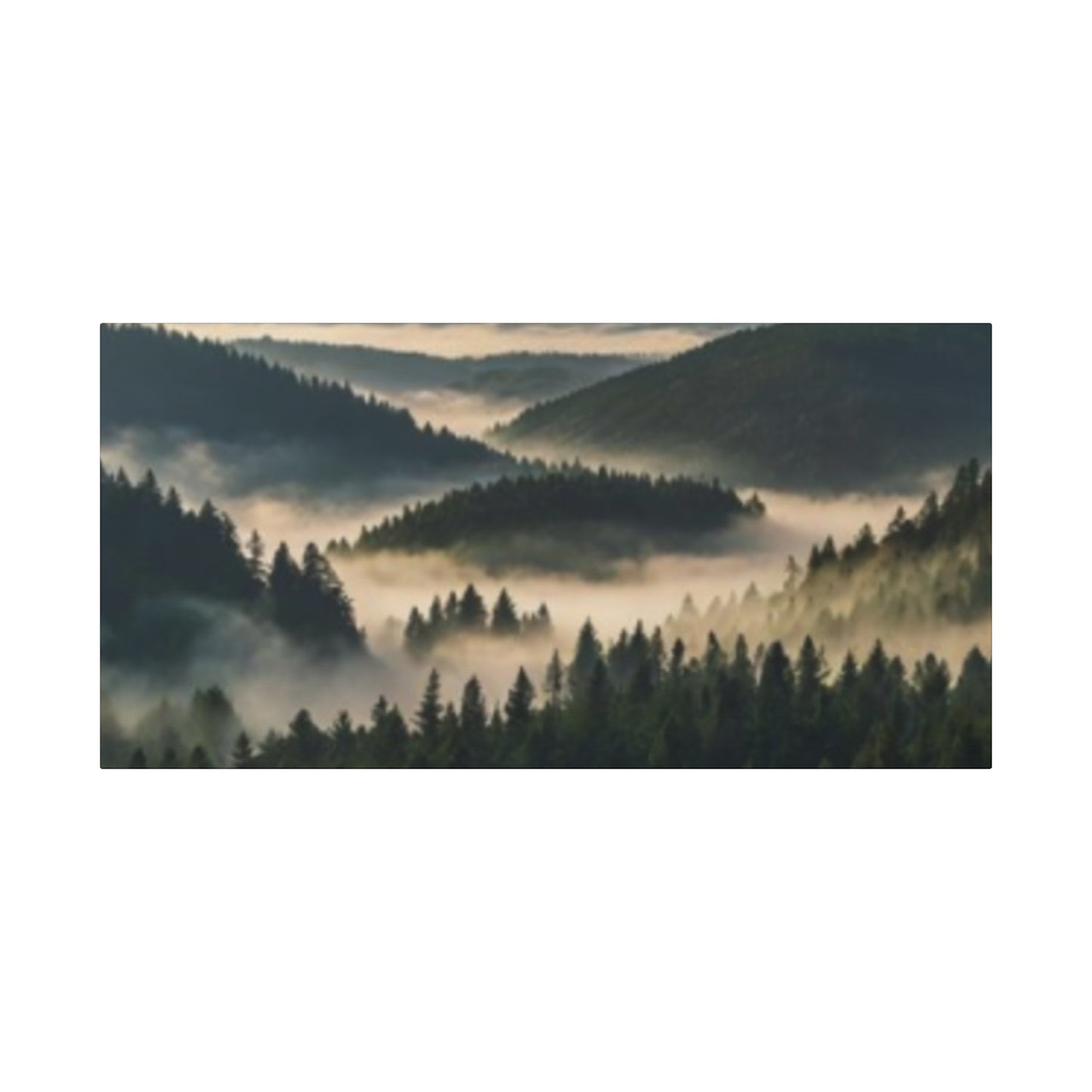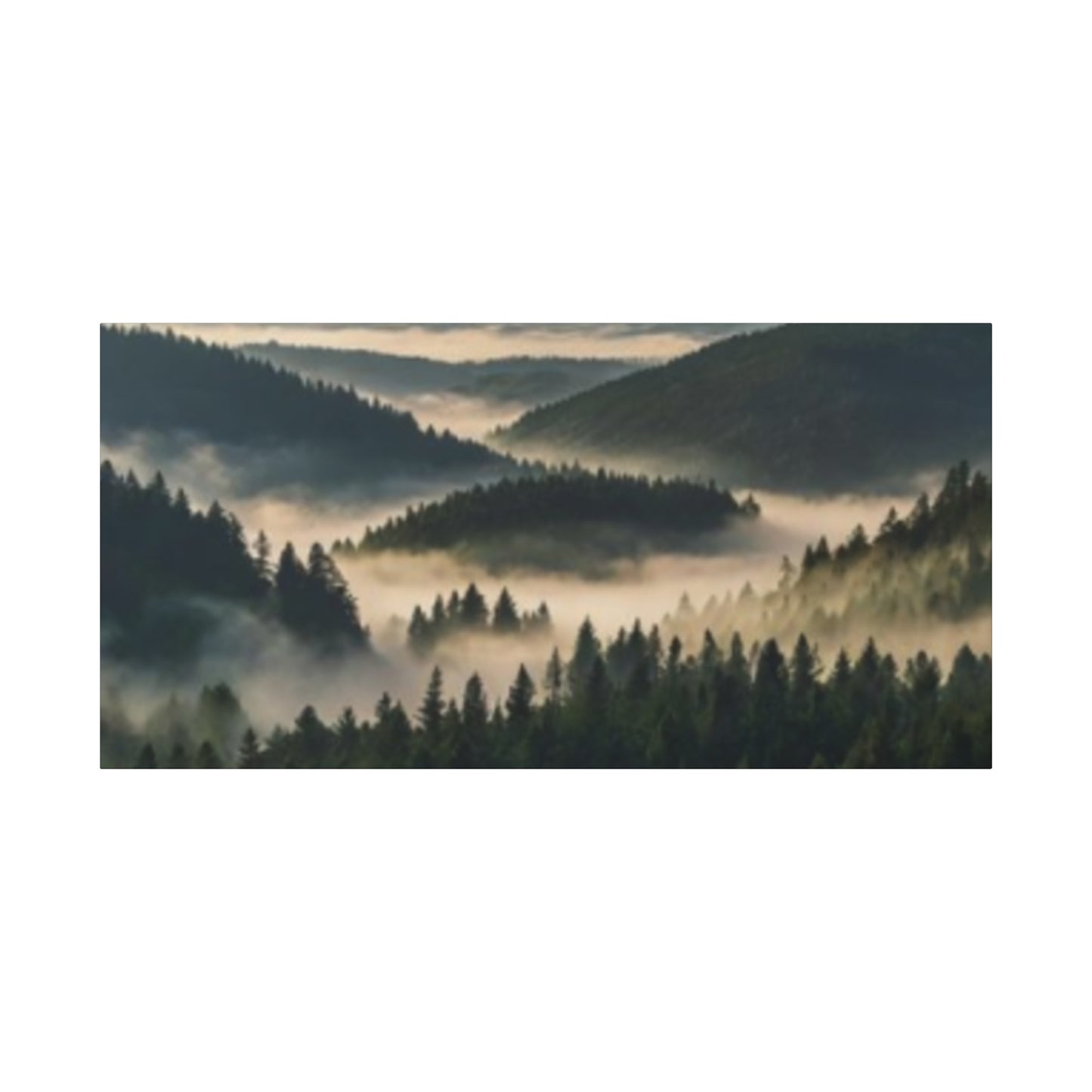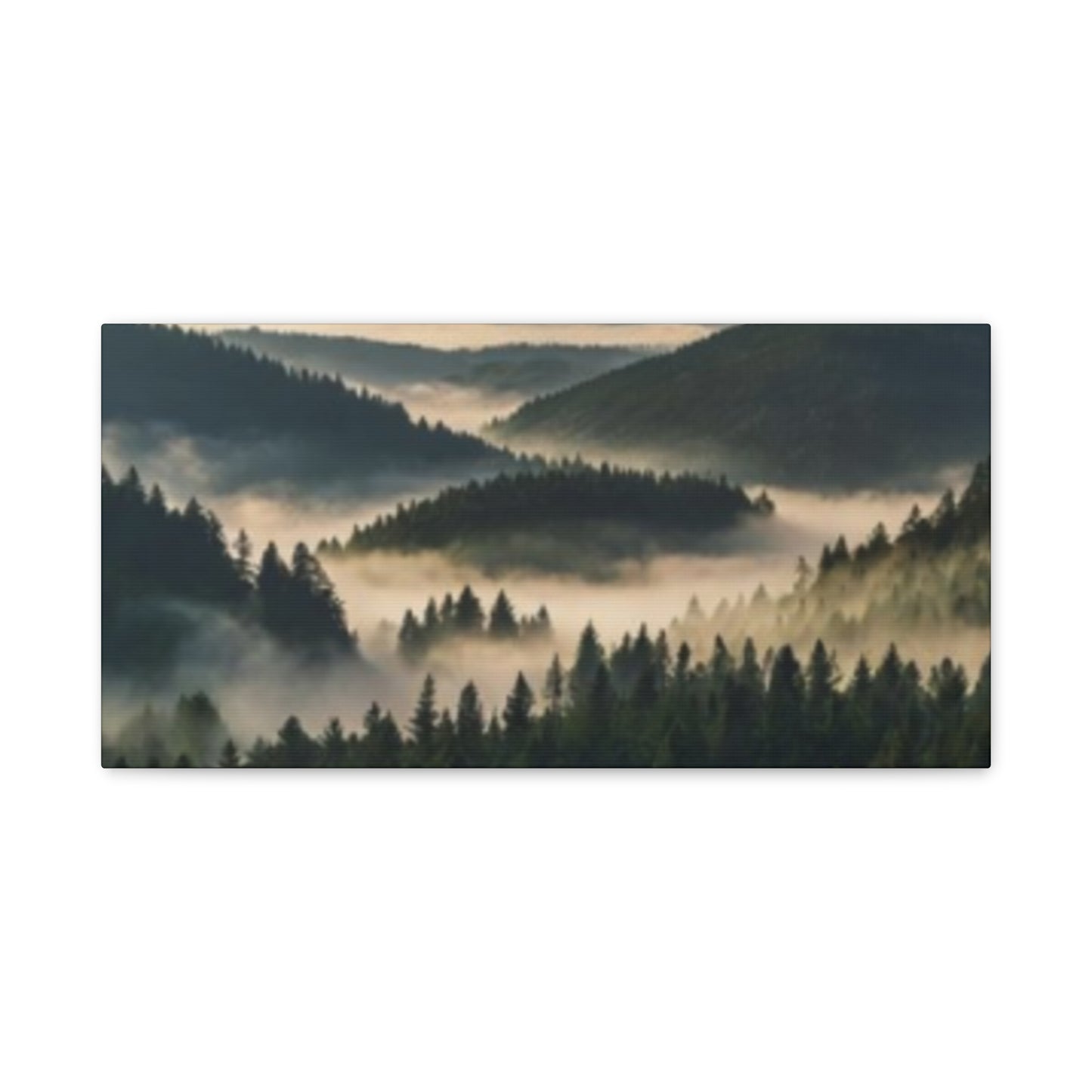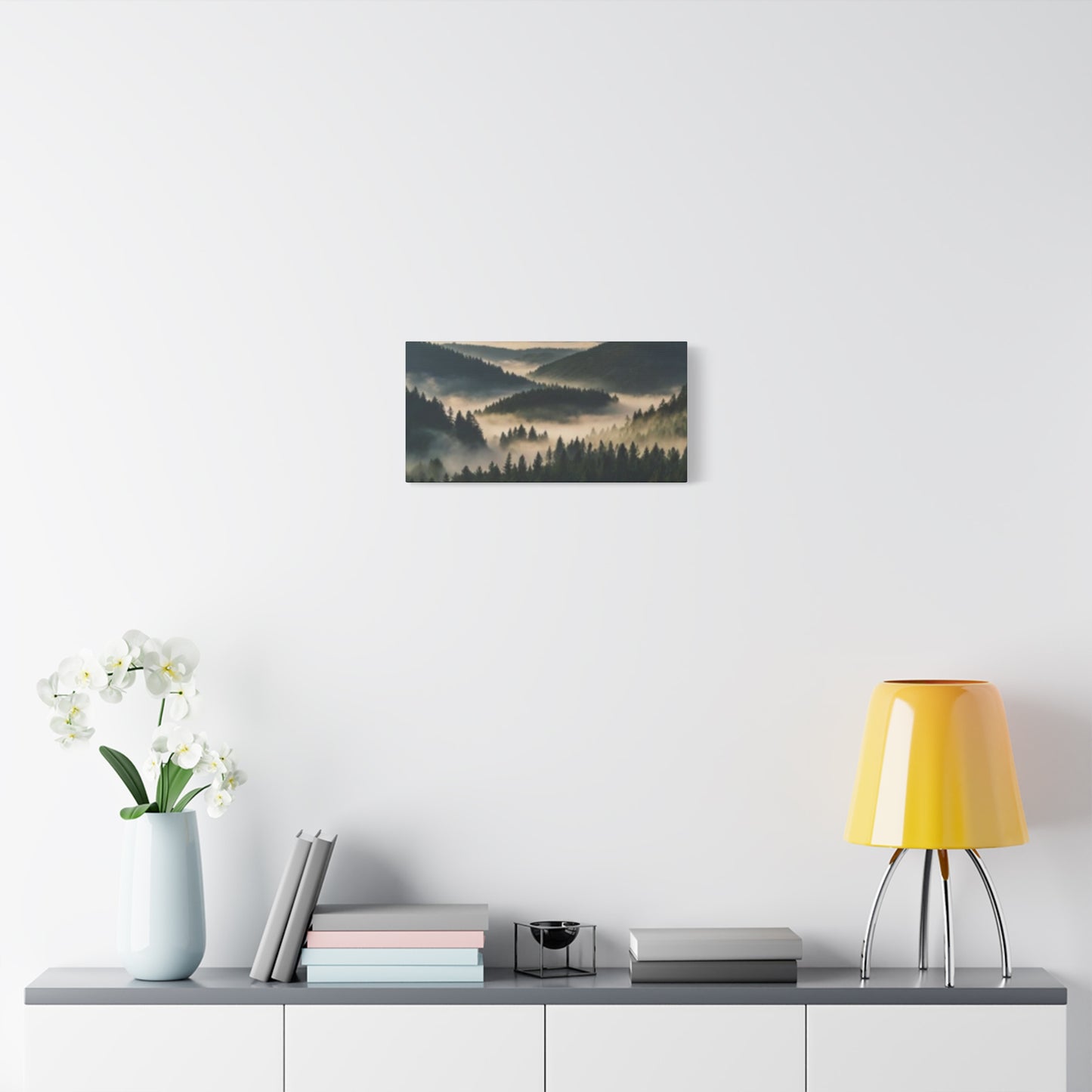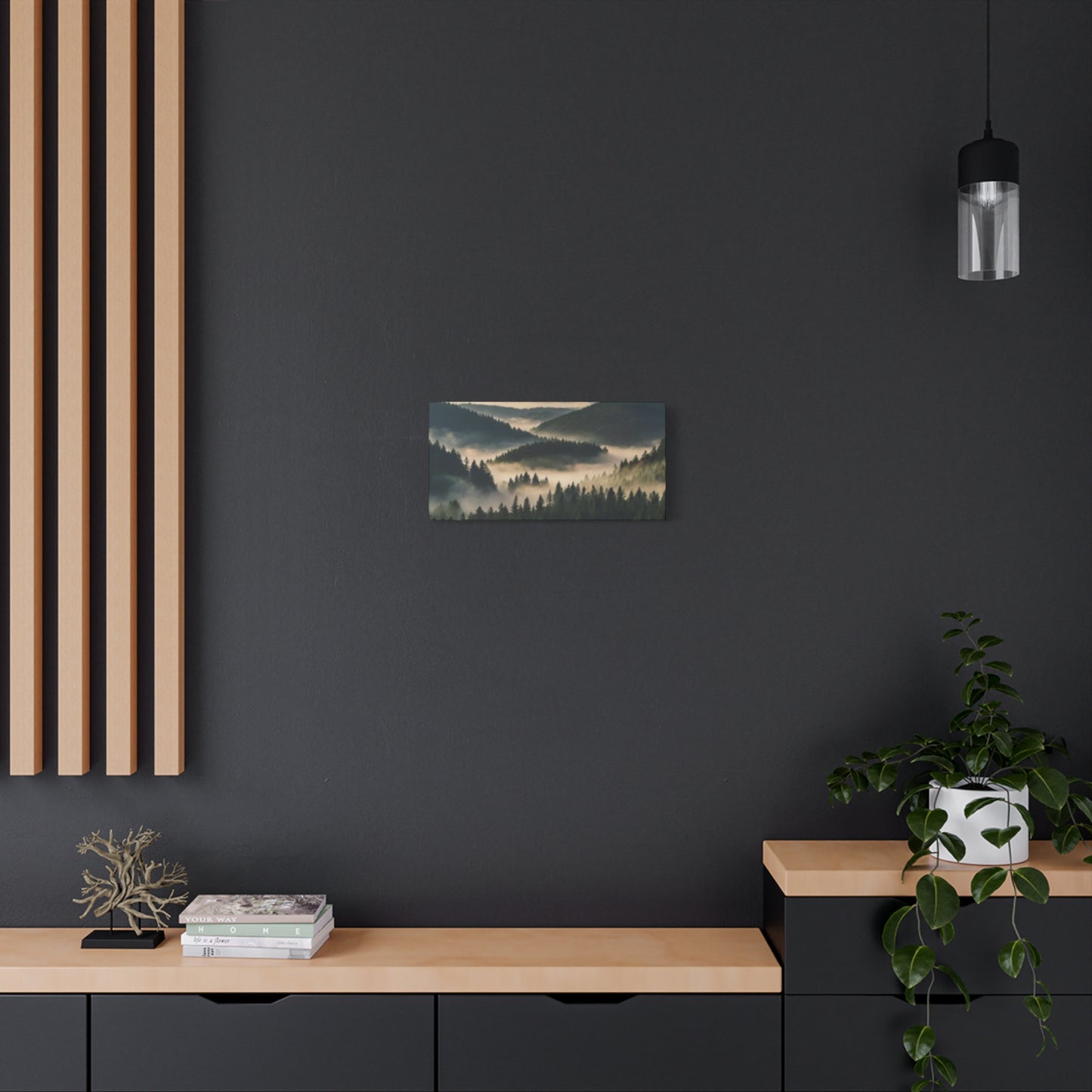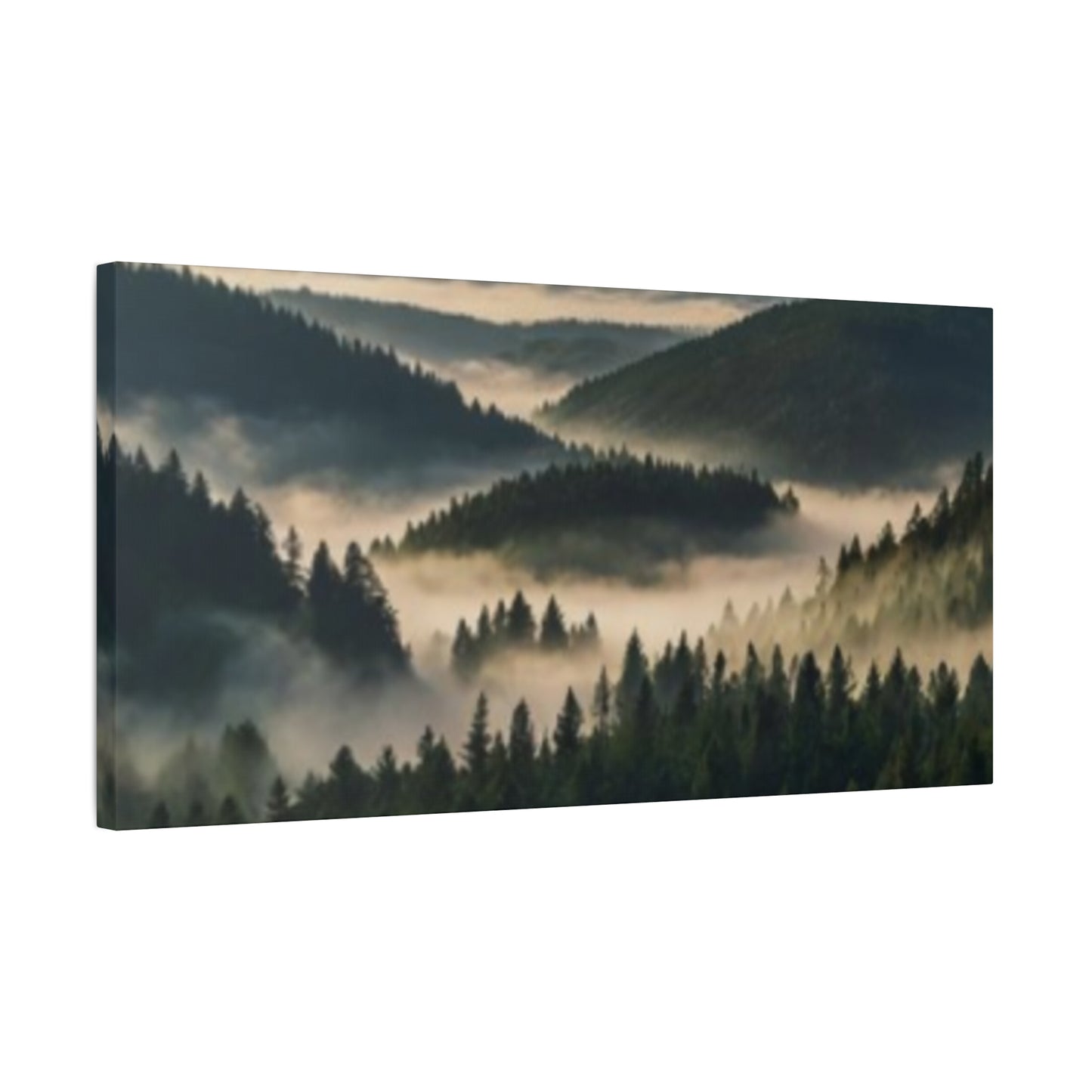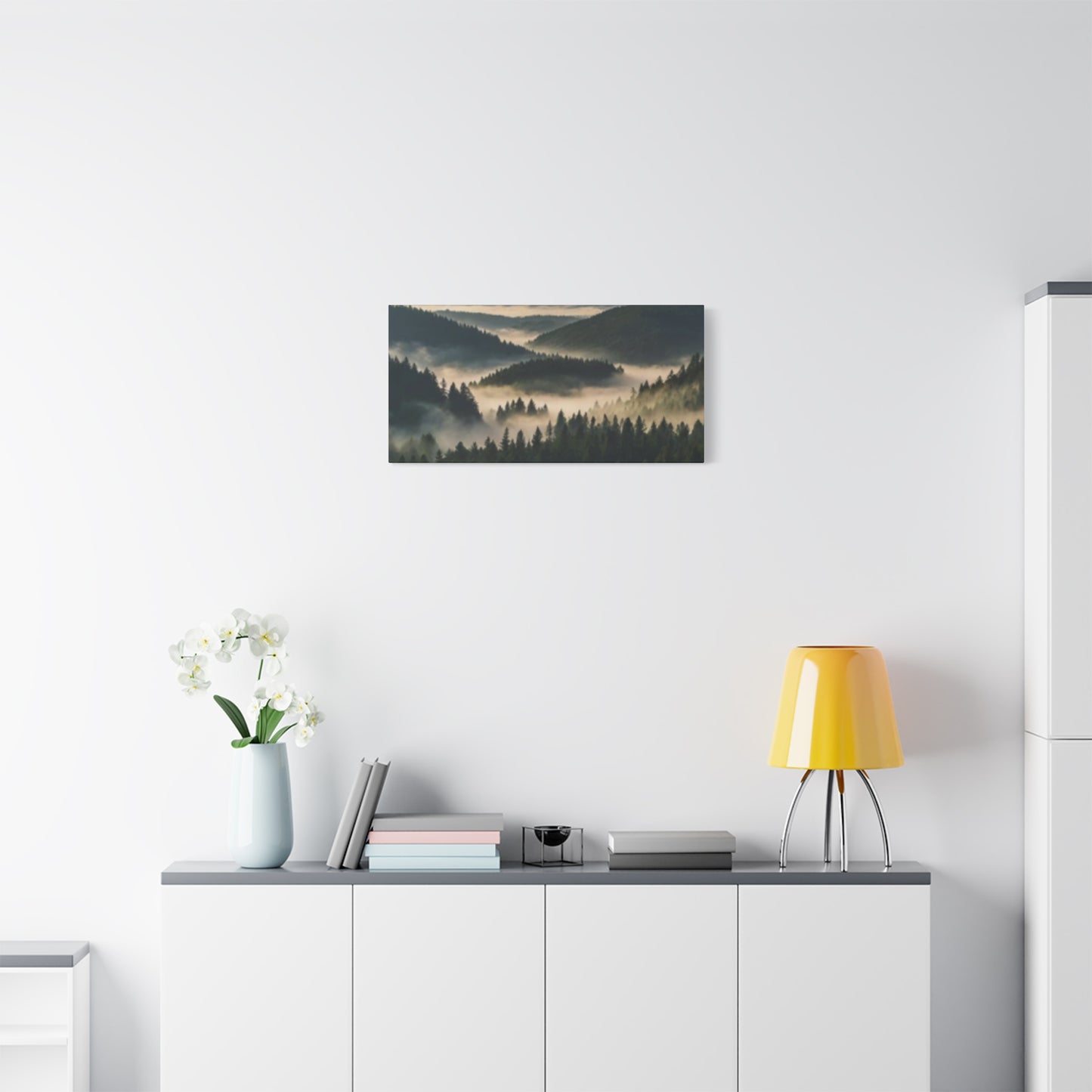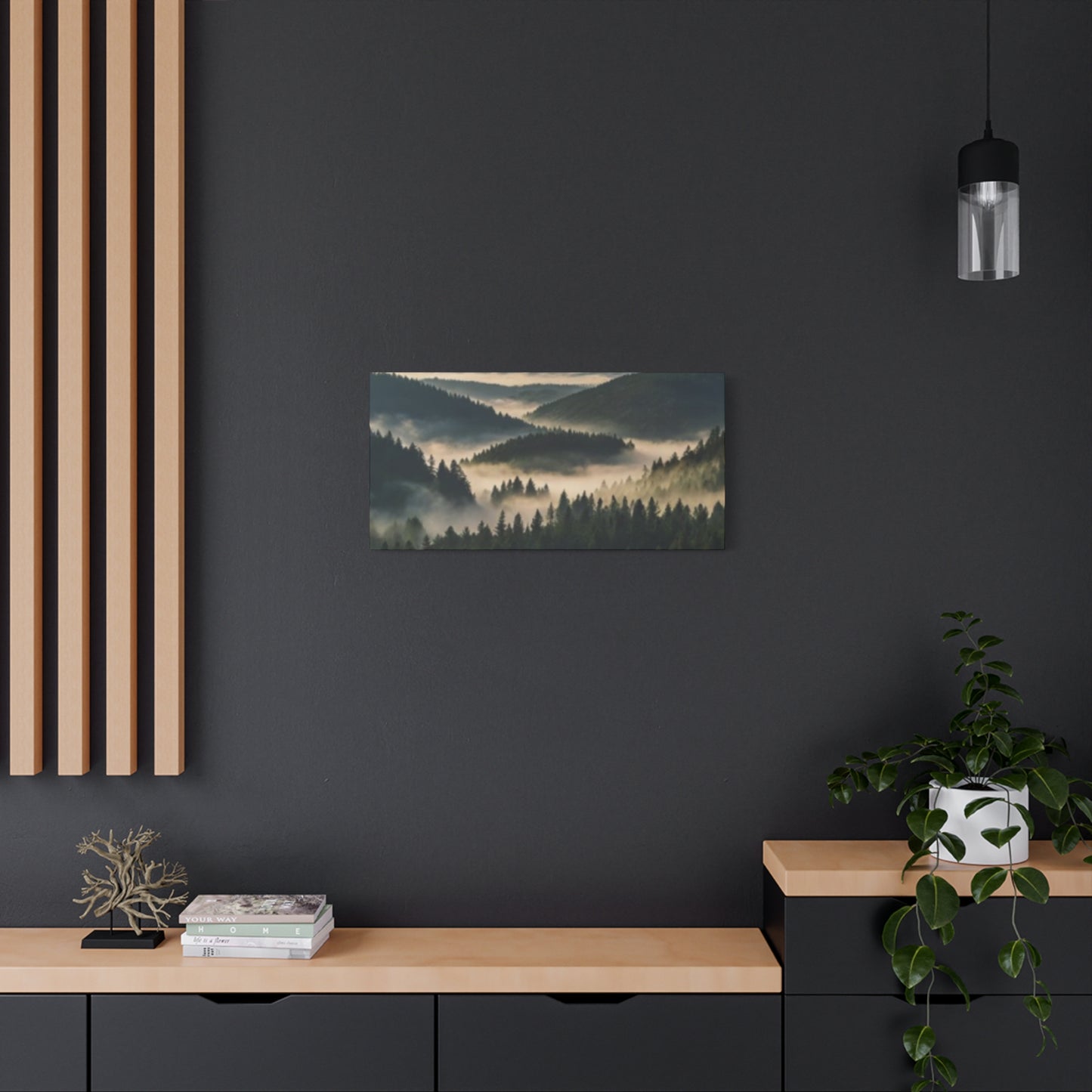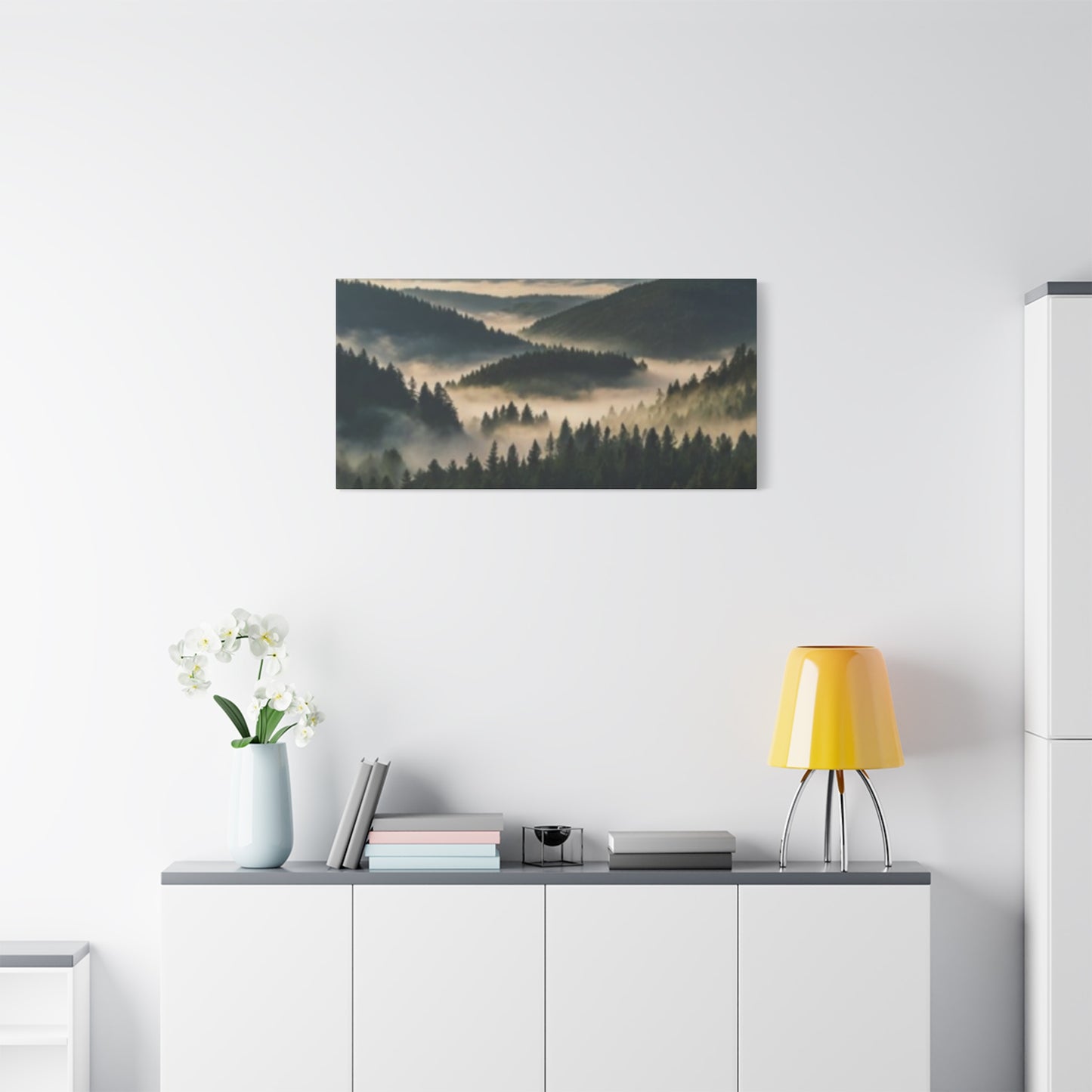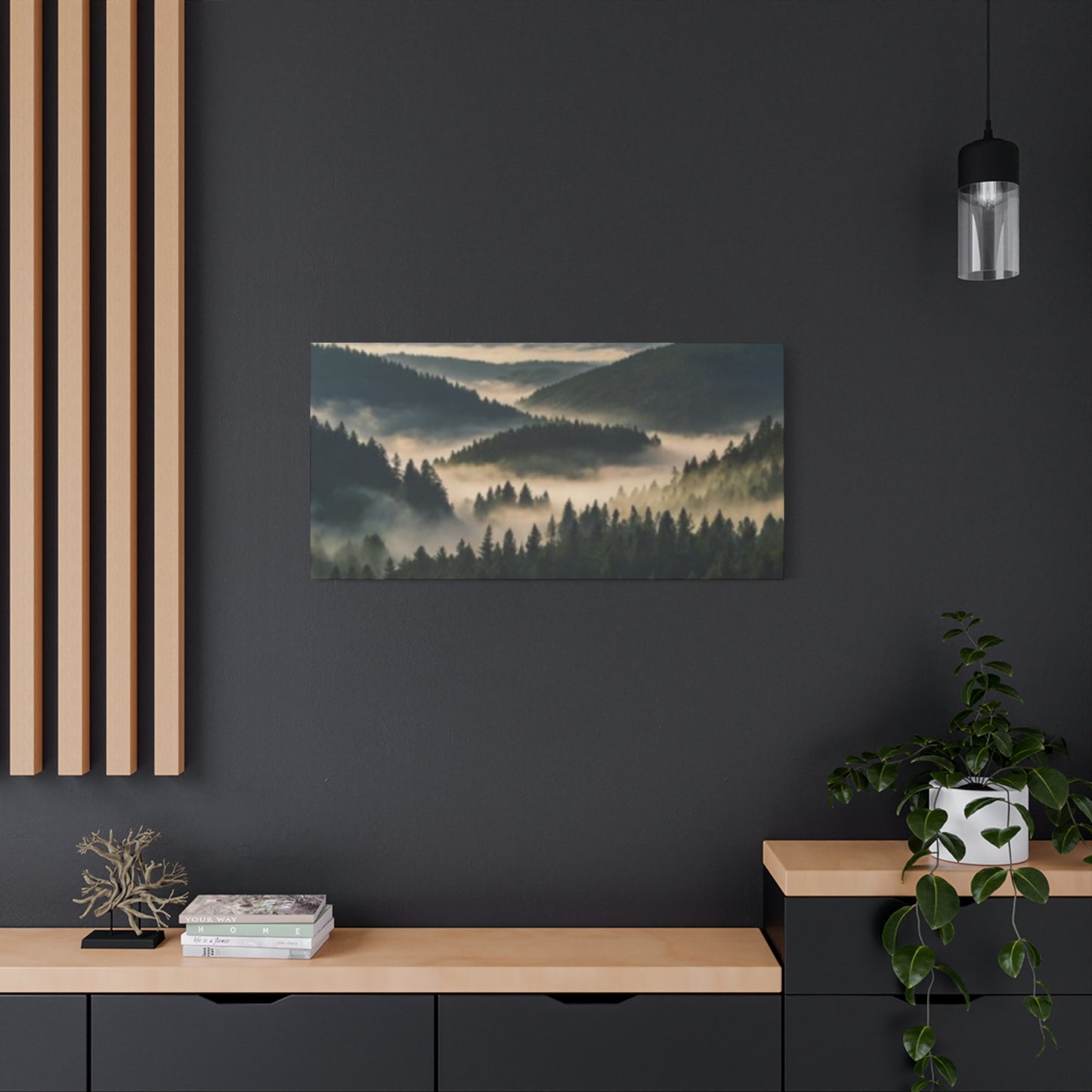Majestic Vistas: A Deep Dive into Mountain and Clouds Panoramas Wall Art
The inherent human desire to connect with the natural world is a profound and timeless impulse. We seek out vistas that stretch our perception, environments that humble us with their scale, and moments of atmospheric beauty that remind us of the planet's artistry. Among the most powerful and evocative scenes in nature are the grand panoramas of mountains meeting the sky, a dynamic interplay between solid, unyielding stone and ephemeral, ever-shifting clouds. Translating this grandeur into our personal spaces is the purpose of mountain and clouds panoramas wall art, a genre of interior decor that does more than simply adorn a wall; it installs a window to the sublime. This art form captures the immense scale and emotional depth of these landscapes, allowing us to experience a sliver of their majesty within the comfort of our homes.
The panoramic format, by its very nature, mimics the horizontal sweep of human vision, immersing the viewer in the scene and creating a sense of presence that standard-sized art cannot replicate. Whether it is the sharp, sunlit peak of a distant summit piercing a blanket of morning fog or the dramatic, stormy congregation of cumulonimbus clouds gathering over a rugged range, these images tell a story of power, tranquility, and the perpetual motion of the earth and its atmosphere. This comprehensive exploration delves into every facet of this captivating art form, from the psychological impact and interior design principles to the technical artistry and diverse materials used to bring these breathtaking visions to life. It is a journey into the heart of the mountains and the soul of the sky, curated to guide you in selecting a piece that resonates with your spirit and transforms your living environment.
The Timeless Fascination with Mountains in Art
Mountains have served as a powerful muse for artists throughout human history, symbolizing everything from divine power and formidable obstacles to serene sanctuaries and personal achievement. Their colossal presence on the landscape commands attention and inspires a sense of awe, a feeling that artists have long sought to capture and convey. In ancient cultures, mountains were often depicted as the homes of gods or the bridge between the earthly and celestial realms. These early artistic representations were less about photorealistic accuracy and more about capturing the spiritual and mythological significance of these towering landforms. As artistic techniques evolved, so did the depiction of mountains. During the Renaissance, mountains began to appear as detailed backdrops in portraits and narrative scenes, adding depth and a sense of place.
However, it was during the Romantic period in the 18th and 19th centuries that mountains truly took center stage. Artists like Caspar David Friedrich painted them not just as geographical features but as protagonists in their own right, imbuing them with emotional weight and using their scale to explore themes of human insignificance in the face of nature's power. This era cemented the mountain as a symbol of the sublime—a concept that describes beauty so immense it is almost terrifying. This fascination continues unabated in the modern era, where mountain and clouds panoramas wall art has become a popular way to bring this sense of the sublime into contemporary homes. The appeal is universal, tapping into a collective human consciousness that sees mountains as enduring symbols of strength, stability, and the untamed wild.
Capturing the Ethereal Dance of Clouds
If mountains represent the solid, enduring aspects of the natural world, clouds are their ephemeral and dynamic counterpart. They are nature's poetry, written across the canvas of the sky in transient forms and infinite variety. The artistic challenge and appeal of clouds lie in their very formlessness and constant motion. Capturing a cloud is like capturing a fleeting thought or emotion. In the context of mountain and clouds panoramas wall art, clouds add a crucial layer of narrative and mood to the scene. They are not merely atmospheric filler; they are active participants in the landscape's story. A wisp of a cirrus cloud at high altitude can suggest serenity and crisp, clean air.
A thick bank of stratus fog settled in a valley can evoke mystery and quiet solitude. A towering, dark cumulonimbus cloud boiling over a peak warns of impending power and dramatic change. Artists and photographers who specialize in these scenes become amateur meteorologists, understanding how light interacts with water vapor and ice crystals to create a stunning array of colors and textures. The soft, diffused light of an overcast day can reveal subtle details in the rock face, while the golden hour light of sunrise or sunset can set the clouds ablaze in fiery hues of orange, pink, and purple. This ethereal dance of light and vapor adds a temporal element to the static image, suggesting a specific moment in time and making the entire panoramic scene feel alive and breathing.
Connecting with Nature's Majesty on a Daily Basis
In the hustle and bustle of modern life, opportunities for genuine connection with nature can be infrequent. Work, family, and social obligations often keep us indoors and tethered to technology. This disconnect can lead to increased stress and a diminished sense of well-being. Mountain and clouds panoramas wall art provides a simple yet powerful solution to this modern dilemma by embedding a piece of nature's majesty directly into our daily environment. Having this type of art in the home creates a constant, passive touchpoint with the natural world. It doesn't require a special trip or dedicated time; the connection is available with a simple glance.
Waking up to a view of a serene alpine lake reflecting a cloudy sky or taking a coffee break while gazing at a sun-drenched mountain range can have a subtle but cumulative positive effect on one's mental state. This daily dose of nature helps to recalibrate our perspective, reminding us of the world that exists beyond our immediate concerns. It can foster a deeper appreciation for the environment and even inspire future adventures. For those who are passionate about hiking, climbing, or simply being outdoors, this art serves as a beautiful reminder of past experiences and a source of inspiration for future ones. It is more than just decoration; it is a lifestyle statement and a tool for maintaining a crucial connection to the planet's grandeur, ensuring that even on the busiest of days, the majesty of nature is never more than a glance away.
Sleek and Luminous: The Impact of Metal Prints
Metal prints, particularly those made on aluminum, represent a cutting-edge medium for displaying mountain and clouds panoramas with exceptional vibrancy and a unique luminous quality. The most popular method, dye-sublimation, involves infusing dyes directly into a specially coated aluminum sheet using heat and pressure. This process doesn't just print the image on the surface; it embeds it within the metal, resulting in a finish that is not only incredibly durable but also has a distinctive glow. Because the image is part of the metal, it seems to radiate its own light, an effect that is especially powerful for scenes with high contrast and bright highlights, like sunbeams breaking through clouds or reflecting off snow.
Metal prints are renowned for their sharpness and detail, capturing every crevice of a rock face and every wisp of a cloud with startling clarity. They come in various finishes, from a high-gloss surface that maximizes color saturation and luminescence to a matte or satin finish that reduces glare and offers a more subtle, sophisticated look. One of the greatest advantages of metal prints is their resilience. They are waterproof, scratch-resistant, and easy to clean, making them an excellent choice for high-traffic areas or even environments with higher humidity, like bathrooms or covered patios. Like acrylic prints, they are often displayed with a float mount, creating a sleek, modern aesthetic. For a piece of mountain wall art that is both visually stunning and virtually indestructible, metal is an unbeatable choice.
The Role of Framing in Enhancing Panoramic Art
While many modern mediums like canvas, metal, and acrylic are designed to be displayed without a frame, the art of framing still plays a crucial role in enhancing and protecting panoramic wall art, particularly for paper prints. A frame acts as a definitive border, separating the artwork from its surroundings and signaling its importance. This visual punctuation mark helps to focus the viewer's attention and can dramatically influence the overall aesthetic. The style of the frame should complement both the artwork and the room's decor. A minimalist panorama with clean lines and a modern feel might be best served by a simple, thin frame in black, white, or a natural wood finish.
A more traditional or dramatic mountain scene could be elevated by a wider, more ornate frame that adds a sense of weight and significance. The color of the frame can be chosen to harmonize with the colors in the room or to pick out a specific accent color from within the panoramic image itself. Beyond aesthetics, frames serve a vital protective function. For paper prints, a frame with UV-protective glass or acrylic is essential for preventing fading and damage from airborne pollutants. It provides a stable and secure housing for the artwork, ensuring it remains flat and protected for years to come. Whether sleek and modern or classic and ornate, a well-chosen frame is the finishing touch that can elevate a panoramic print from a beautiful image to a stunning centerpiece.
The Digital Artist's Touch: Enhancing Natural Beauty
In the world of modern digital photography, the work of creating a stunning mountain panorama rarely ends when the camera's shutter closes. Post-processing, often referred to as the "digital darkroom," is an essential and artistic part of the workflow where the raw data captured by the camera is refined and enhanced to match the artist's vision. This is not about creating a fake or overly manipulated image, but about bringing out the inherent beauty of the scene that the camera sensor may not have fully captured. A digital artist might start by making global adjustments to the overall brightness, contrast, and color balance of the panorama.
Then, they will move on to more localized adjustments, a process known as "dodging and burning," where they selectively lighten (dodge) or darken (burn) specific areas of the image. This can be used to draw the viewer's attention to a key feature, like a sunlit peak, or to add more depth and dimension to the clouds. They might also sharpen the details in the rock faces, reduce any unwanted digital noise in the shadows, or carefully remove minor distractions like a stray branch or a piece of litter. This meticulous work is what elevates a good photograph to a great one. The digital artist's touch is about skillfully using technology to bridge the gap between what the camera recorded and what the human eye and heart experienced at that moment, ensuring the final piece of wall art is as impactful and beautiful as possible.
Creating a Focal Point in the Living Room
The living room is often the heart of the home, a central gathering space for family and friends. A large-scale mountain and clouds panorama is an exceptional choice for creating a powerful and captivating focal point in this area. Placed on the main wall, typically the one behind the sofa or opposite the entrance, it immediately draws the eye and sets the tone for the entire room. The expansive, horizontal nature of a panoramic print naturally complements the length of a sofa, creating a cohesive and balanced look. The key to success is choosing a piece of the right scale. A panorama that is too small will look lost on a large wall, while one that is appropriately sized—ideally about two-thirds the width of the sofa it hangs above—will feel intentional and impactful.
The artwork can serve as the inspiration for the room's entire color palette. You could pull the soft blues from the sky, the earthy grays and browns from the mountains, or the vibrant greens from the valleys and use these colors in your throw pillows, rugs, and other accessories to create a harmonious and unified design. A dramatic, high-contrast panorama can add energy and dynamism to the space, while a serene, misty scene can foster a calm and relaxing atmosphere. By making a mountain panorama the centerpiece of your living room, you create more than just a decorative element; you create a conversation starter, a source of daily inspiration, and a window to a world of natural grandeur.
Fostering Serenity in the Bedroom with Mountain Vistas
The bedroom is a personal sanctuary, a space dedicated to rest, relaxation, and rejuvenation. The choice of wall art in this room should contribute to a serene and peaceful atmosphere. Mountain and clouds panoramas are exceptionally well-suited for this purpose, particularly those that depict calm and tranquil scenes. A panorama of a misty morning in a quiet valley, a placid alpine lake reflecting a soft, cloudy sky, or a distant mountain range bathed in the gentle light of dawn can have a profoundly calming effect on the mind. These images encourage a sense of quiet contemplation and help to disconnect from the stresses of the day.
Placing a large panorama on the wall opposite the bed allows it to be the first thing you see when you wake up and the last thing you see before you fall asleep, setting a peaceful tone for both the beginning and end of your day. Alternatively, placing it above the headboard can create a beautiful, immersive backdrop that anchors the bed as the focal point of the room. When selecting a piece for the bedroom, consider artwork with a softer color palette—cool blues, gentle grays, soft greens, and muted earth tones are all excellent choices. The goal is to select an image that feels like a gentle escape, a visual lullaby that transforms your bedroom into a true retreat from the outside world.
Inspiring Productivity in the Home Office
In a home office, the environment can have a significant impact on focus, creativity, and productivity. While the space needs to be functional, it should also be inspiring. A mountain and clouds panorama can be a powerful addition to a home office, serving as a source of motivation and a tool for mental clarity. Mountains are natural symbols of strength, perseverance, and achieving goals. Having a view of a majestic peak can serve as a subconscious reminder to aim high and overcome challenges in your work. Gazing at a vast, open landscape can also help to alleviate the feeling of being cooped up, providing a "mental escape" during short breaks. This can reduce stress and help to reset your focus.
For a home office, consider a panorama that is energizing but not distracting. A scene with clear, bright light, sharp details, and a sense of immense scale can be particularly effective. Placing the artwork on a wall that you face, or on one that is in your peripheral vision, can provide a constant source of inspiration without pulling your direct attention away from your tasks. The panoramic format can also create a sense of expansiveness, making a smaller office feel more open and less claustrophobic. By integrating a mountain vista into your workspace, you are not just decorating; you are creating an environment that supports ambition, clears the mind, and connects your daily work to a grander perspective.
Making a Grand Statement in Entryways and Hallways
Entryways and hallways are often overlooked spaces in interior design, yet they offer the first impression of your home. These transitional areas are the perfect canvas for making a bold and dramatic statement with a mountain and clouds panorama. A long, narrow hallway is ideally suited to the horizontal format of a panoramic print. Hanging a large-scale panorama along the length of the hall can transform it from a simple corridor into a captivating gallery-like experience, drawing guests in and guiding them through the space. In an entryway or foyer, a panoramic piece can immediately establish a theme of nature and tranquility, welcoming visitors with a stunning view.
Because people are typically just passing through these areas, you can afford to be more daring with your choice of artwork. A highly dramatic, colorful, and high-impact panorama that might feel overwhelming in a living room can work perfectly in an entryway, providing a "wow" factor that leaves a lasting impression. The key is to ensure the artwork is well-lit, either with natural light from a nearby door or with dedicated track lighting or a picture light. This will bring the scene to life and highlight its details. By utilizing these often-neglected spaces, you can add a significant layer of personality and artistry to your home, turning a simple passageway into a breathtaking journey.
Mountain Art in Minimalist Interior Designs
Minimalism is a design philosophy centered on simplicity, clean lines, and a lack of clutter. It emphasizes the idea that "less is more." In a minimalist interior, every single item must be carefully chosen for its form and function, and this is especially true for wall art. A mountain and clouds panorama can be a surprisingly perfect fit for a minimalist aesthetic. The key is to choose an image and a presentation style that align with minimalist principles. Look for panoramas with simple, strong compositions—perhaps a single, iconic peak against a clear or subtly clouded sky, or a serene, misty scene with a limited color palette.
A black and white panorama is often an excellent choice, as its focus on form and light complements the minimalist ethos. The presentation is equally important. A frameless medium like a metal print, an acrylic print, or a gallery-wrapped canvas with clean, sharp edges works beautifully. These formats have a sleek, object-like quality that integrates seamlessly into a minimalist space without adding unnecessary visual clutter. In a room with neutral colors and sparse furnishings, a single, large-scale panoramic piece can serve as the sole focal point, adding a powerful dose of natural beauty and organic form without disrupting the overall sense of calm and order. It proves that minimalism is not about emptiness, but about making room for what is truly essential and beautiful.
Complementing Rustic and Farmhouse Aesthetics
Rustic and farmhouse interior design styles celebrate natural materials, warmth, and a connection to a simpler, more pastoral way of life. These aesthetics are characterized by the use of reclaimed wood, stone, textured fabrics, and a neutral, earthy color palette. Mountain and clouds panoramas are a natural and harmonious addition to these types of interiors, as they bring the rugged beauty of the outdoors inside, reinforcing the core themes of the design. For a rustic or farmhouse space, the choice of medium for the artwork is particularly important. A panorama printed directly on wood is an obvious and perfect match, as the wood grain adds a layer of organic texture and warmth that complements other wooden elements in the room, like exposed beams or a farmhouse table.
A gallery-wrapped canvas also works well, as its textured surface has a softer, more traditional feel than sleek metal or acrylic. Choosing a substantial wooden frame for a paper or canvas print can also enhance the rustic feel. The subject matter can be tailored to the style as well. A panorama of a misty forest in the foothills, a serene mountain valley with a barn in the foreground, or a range of rolling, tree-covered mountains would all feel right at home. The goal is to choose a piece that feels grounded, authentic, and connected to the earth, enhancing the cozy, natural, and welcoming atmosphere of a rustic or farmhouse home.
Enhancing Modern and Contemporary Spaces
Modern and contemporary interior design styles are characterized by clean lines, geometric shapes, neutral color palettes with occasional bold accents, and an emphasis on space and light. While sometimes perceived as cold, these styles can be beautifully warmed and enhanced by the right piece of art. A mountain and clouds panorama can provide a stunning organic contrast to the structured, man-made elements of a modern interior. The sweeping, natural curves of a ridgeline or the soft, amorphous shapes of clouds can break up the rigidity of a room, adding a layer of visual interest and natural beauty. For these spaces, the presentation of the artwork is key. Frameless, high-impact mediums are the ideal choice.
A high-gloss acrylic print or a vibrant metal print with a float mount will create a sleek, "floating" appearance that aligns perfectly with the modern aesthetic. The clean edges and luminous quality of these mediums complement the polished surfaces and uncluttered nature of the design. The artwork itself can be either a hyper-realistic photograph with sharp details and vibrant colors, which adds a "wow" factor, or a more abstract or minimalist interpretation that focuses on form and color, acting as a sophisticated piece of modern art. In a contemporary space, a mountain panorama can be the perfect element to add soul, color, and a connection to the natural world without compromising the clean and sophisticated design principles.
The Use of Panoramic Art in Scandinavian Design
Scandinavian design is a popular style known for its blend of minimalism, functionality, and a deep appreciation for natural elements. It is characterized by light-filled spaces, a pale and neutral color palette (lots of whites, grays, and light woods), natural materials like wood and wool, and a cozy, comfortable atmosphere often referred to as "hygge." Mountain and clouds panoramas are an exceptionally fitting choice for Scandinavian interiors because they align perfectly with the style's emphasis on nature. In a typically light and airy Scandinavian room, a panoramic print can serve as a stunning focal point, bringing a touch of the rugged Nordic landscape indoors.
To harmonize with the aesthetic, it is best to choose panoramas with a light and serene feel. Images of snow-covered mountains, misty fjords, or scenes with soft, diffused light and a cool color palette of blues, grays, and whites are ideal. A black and white panorama can also be a powerful and sophisticated choice. The presentation should be simple and clean. A gallery-wrapped canvas, a print in a simple, light wood or white frame, or a frameless metal print with a matte finish would all complement the understated elegance of the design. The artwork should feel like a natural extension of the space, enhancing its tranquility and connection to the outdoors, rather than overwhelming it with bold color or heavy framing.
Lighting Your Artwork for Maximum Impact
Proper lighting is one of the most crucial yet often overlooked aspects of displaying wall art. The right lighting can transform a beautiful mountain panorama from a passive decoration into a dynamic and captivating centerpiece, while poor lighting can leave it looking dull and lifeless. The goal is to illuminate the artwork evenly without creating glare or harsh shadows. Natural light is beautiful but can be damaging over time due to UV rays, so it is best to avoid hanging valuable art in direct sunlight. For artificial lighting, dedicated art lighting is the best solution. Track lighting is a versatile option, allowing you to aim multiple adjustable fixtures directly at the panoramic print. This is great for long pieces, as you can use several heads to ensure even coverage from end to end.
Another excellent choice is a wall-washer fixture, which is designed to cast a broad, even sheet of light down the wall. For a more traditional and focused look, a picture light mounted directly above the artwork can provide intimate, dedicated illumination. When choosing bulbs, look for those with a high Color Rendering Index (CRI) of 90 or above. This ensures that the colors of the artwork will be rendered accurately and vividly. The color temperature of the bulb is also important; a warm white (around 2700K-3000K) can enhance the cozy feel of a sunset scene, while a neutral or cool white (around 3500K-4000K) can bring out the crispness of a snowy, daytime landscape. Investing in proper lighting is investing in the beauty of your art.
Choosing the Right Scale: Size and Placement Matter
The scale of a piece of wall art and its placement in a room are fundamental to its success as a design element. With mountain and clouds panoramas, which are meant to convey a sense of vastness, choosing the right size is particularly critical. A common mistake is to choose art that is too small for the wall, which can look awkward and diminish the impact of the image. As a general rule of thumb, a piece of art should fill about two-thirds to three-quarters of the empty wall space it is intended for. For example, if you are hanging a panorama above a 9-foot-long sofa, the artwork should be at least 6 feet wide.
Don't be afraid to go big; a large, statement-making panorama can anchor a room and create a much more powerful and immersive experience. The placement height is also important. The center of the artwork should be at eye level, which is typically around 57 to 60 inches from the floor. This is the standard height used by art galleries and ensures the piece can be viewed comfortably. When hanging art above furniture like a sofa, console table, or headboard, it should be placed about 6 to 10 inches above the top of the furniture to create a visual connection between the two pieces. By carefully considering the size and placement, you ensure that your panoramic wall art will be perfectly integrated into your space, creating a balanced, professional, and impactful look.
The Impact of Vertical Panoramas on Space Perception
While the term "panorama" typically brings to mind a wide, horizontal format, vertical panoramas are a unique and impactful variation that can be used to great effect in interior design. A vertical panorama, with its tall and narrow aspect ratio, naturally draws the eye upward, creating a sense of height and loftiness. This can be a powerful tool for altering the perception of space in a room. In a room with low ceilings, a vertical panorama can create an illusion of greater height, making the space feel more open and less compressed. They are also perfectly suited for narrow sections of wall where a horizontal piece would not fit, such as the space between two windows, next to a doorway, or on a slim pillar.
The subject matter of a vertical panorama is often different from its horizontal counterpart. Instead of capturing the wide expanse of a mountain range, a vertical panorama might focus on the dramatic ascent of a single, sharp peak, the cascading fall of a mountain waterfall, or the immense height of a towering cloud formation. This upward-looking perspective can be incredibly inspiring and majestic. Displaying a vertical mountain panorama is a creative way to add a dramatic focal point to a room, solve a design challenge presented by an awkward wall space, and introduce a powerful sense of verticality and aspiration into your home.
Biophilic Design: Our Innate Connection to Nature
Biophilic design is an innovative approach to architecture and interior design that seeks to connect building occupants more closely to nature. The core principle of biophilia is that humans have an innate, biological need to affiliate with the natural world, and that fulfilling this need has profound benefits for our physical and mental well-being. Incorporating natural elements into our built environments can reduce stress, improve cognitive function, and enhance creativity. Mountain and clouds panoramas wall art is a perfect and easily accessible application of biophilic design principles. These artworks serve as a direct visual connection to nature.
By featuring images of natural landscapes, they can evoke the same feelings of calm and awe that we experience when actually outdoors. A large panorama can act as a "surrogate view," providing the restorative benefits of a window looking out onto a beautiful natural scene, even in a room without any real windows. The patterns and forms within the artwork—the fractal patterns of a rocky cliffside, the soft curves of clouds, the sweeping expanse of a valley—are all forms that resonate with our inherent connection to the natural world. By consciously choosing to include this type of art in our homes and offices, we are not just decorating; we are actively creating healthier, happier, and more restorative spaces that cater to our deep-seated human need to be close to nature.
How Mountain Imagery Can Reduce Stress and Anxiety
In our fast-paced, high-pressure world, stress and anxiety are common challenges. A growing body of scientific research suggests that exposure to natural environments, even through images, can have a tangible and positive effect on our mental state. Mountain imagery, in particular, can be a powerful tool for stress reduction. The visual characteristics of mountain landscapes—their vast scale, their stability, and their serene beauty—can trigger a relaxation response in our nervous system. Gazing at a wide-open panorama can induce a state of "soft fascination," a concept from Attention Restoration Theory, where our attention is held effortlessly, allowing our minds to rest and recover from mental fatigue.
The sense of perspective offered by a mountain scene can also be psychologically beneficial. When we view an immense mountain range, our own problems and worries can feel smaller and more manageable in comparison. This shift in perspective can help to break cycles of anxious or ruminative thought. Furthermore, scenes of nature have been shown to lower cortisol levels (the body's primary stress hormone), reduce blood pressure, and slow the heart rate. Simply having a mountain and clouds panorama in your line of sight can provide a "micro-restorative" experience throughout the day, offering a quick and accessible visual escape that helps to calm the mind and soothe the soul.
The Calming Effect of Cloud Formations on the Mind
Clouds, in all their varied and ephemeral forms, have a uniquely calming effect on the human mind. The act of watching clouds drift across the sky is a form of natural meditation, encouraging a state of gentle mindfulness and presence. When captured in a panoramic work of art, this calming quality is preserved and brought into our daily environment. The soft, rounded shapes and diffused edges of many cloud types, such as cumulus or stratus clouds, are inherently non-threatening and visually soothing. Their slow, perceived movement in a static image can create a sense of tranquility and the peaceful passage of time. The colors of clouds also play a role in their psychological impact.
The bright whites and soft grays of a daytime sky can feel clean, pure, and serene. The warm pinks, oranges, and purples of a sunrise or sunset can evoke feelings of comfort, awe, and contentment. Even the dark, moody grays of a stormy sky can have a cathartic effect, providing a sense of drama and release. In a mountain and clouds panorama, the interplay between the solid, grounded mountains and the soft, floating clouds creates a balanced composition that can be both grounding and uplifting. Gazing at the cloud formations in a piece of wall art can provide a mental break, allowing the mind to wander freely and let go of tension, much like daydreaming while lying in a field on a summer day.
Enhancing Mindfulness and Contemplation Through Art
Mindfulness is the practice of paying attention to the present moment without judgment. It is a powerful tool for reducing stress and improving overall well-being. A thoughtfully chosen piece of mountain and clouds panoramas wall art can serve as a beautiful and effective aid for practicing mindfulness and fostering a contemplative atmosphere in the home. The rich detail and vast scale of a panoramic print provide a perfect focal point for a mindfulness exercise. You can practice by sitting comfortably in front of the artwork and simply observing it. Let your eyes wander across the scene.
Notice the fine textures in the rock, the subtle gradations of color in the sky, the delicate wisps of a distant cloud. Observe these details without naming or judging them, simply allowing yourself to be fully present with the image. This act of deep looking can quiet the endless chatter of the mind and anchor you in the here and now. The artwork can also serve as a reminder to take mindful pauses throughout your day. A quick glance at the serene mountain vista can be a cue to take a deep breath, check in with your current state, and reconnect with a sense of peace. By using your wall art as an object of contemplation, you transform it from a mere decoration into an active tool for mental and spiritual wellness, creating a space that encourages stillness, reflection, and a deeper awareness of the present moment.
The Sense of Expansiveness and Freedom Panoramic Art Provides
Human beings are profoundly affected by their physical surroundings. Confined, cluttered, or small spaces can subconsciously trigger feelings of restriction and stress. Conversely, open, expansive spaces can evoke feelings of freedom, possibility, and relief. Mountain and clouds panoramas wall art, with its wide format and depiction of vast landscapes, is a powerful design tool for creating this sense of psychological expansiveness within an interior space. When you hang a large panoramic print on a wall, it functions as a "portal," visually pushing the wall back and opening the room up to a seemingly endless vista. This illusion of depth can make a small room feel significantly larger and more airy.
The psychological effect is a feeling of release and freedom. Your mind is no longer constrained by the physical dimensions of the room; it is free to roam across the sweeping ridgelines and into the deep, open sky. This can be particularly beneficial in urban apartments or windowless rooms where a connection to the outside world is limited. The feeling of freedom provided by these images also connects to the symbolism of the mountains themselves—places of open air, wide horizons, and liberation from the confines of city life. By incorporating a panoramic piece into your home, you are not just adding a view; you are instilling a daily feeling of expansiveness, possibility, and mental breathing room.
Boosting Creativity and Mental Clarity
The environment in which we work and live can have a significant impact on our ability to think clearly and creatively. A cluttered or uninspiring space can lead to a cluttered and uninspired mind. Conversely, an environment that is both calming and stimulating can foster creativity and enhance mental clarity. Mountain and clouds panoramas wall art can play a valuable role in creating such an environment. Research has shown that exposure to nature can improve creative problem-solving skills. The "soft fascination" induced by looking at a natural scene allows the mind to enter a more relaxed and associative state, which is conducive to insight and new ideas.
The grandeur and beauty of a mountain vista can be inherently inspiring, lifting the spirit and encouraging "big picture" thinking. It can help to break through mental blocks by providing a new perspective, both literally and figuratively. The sense of order and complexity found in natural patterns can also be stimulating for the brain. At the same time, the serene and calming aspects of these scenes can help to reduce mental noise and improve focus. By providing a perfect balance of calm and inspiration, a mountain panorama can help to clear the mental fog, reduce distraction, and create a fertile ground for fresh ideas to emerge, making it an ideal addition to any space where creativity and clear thinking are valued.
Using Art to Create a Personal Sanctuary at Home
A home should be more than just a place to live; it should be a sanctuary, a personal retreat where you can feel safe, comfortable, and truly yourself. The art you choose to display plays a crucial role in shaping the emotional atmosphere of your home and turning it into a sanctuary. Mountain and clouds panoramas wall art is particularly effective for this purpose because it allows you to curate a specific emotional landscape for your space. The process of selecting a panorama is a deeply personal one. You are choosing a view that resonates with you on an emotional level. Perhaps you feel a deep sense of peace when looking at a foggy alpine valley, or a surge of joy when viewing a sun-drenched, wildflower-filled meadow at the foot of a mountain.
By placing this image in your home, you are surrounding yourself with that specific positive emotion on a daily basis. The artwork becomes a touchstone, a visual anchor for the feeling you want to cultivate in your sanctuary. Over time, the space becomes infused with the energy of the artwork. Your living room can become a place of awe and inspiration, your bedroom a haven of tranquility. By thoughtfully selecting panoramic art that speaks to your soul, you are actively shaping your environment to support your well-being, creating a personal sanctuary that recharges, comforts, and inspires you every single day.
The Jagged Peaks of the Himalayas in Panoramic Art
The Himalayas, the highest mountain range on Earth, represent the pinnacle of terrestrial grandeur and spiritual significance. In panoramic wall art, these mountains offer scenes of unparalleled drama and scale. Home to Mount Everest, K2, and other legendary giants, the Himalayas are a landscape of extremes: razor-sharp, snow-plastered peaks, colossal glaciers, and some of the deepest valleys in the world. Panoramas from this region are defined by their sheer verticality and the raw, untamed power they convey. The air at these altitudes is thin and clear, resulting in a deep, intense blue sky that contrasts starkly with the brilliant white of the snow and the dark, exposed rock.
Clouds in the Himalayas are often seen far below the summits, creating the breathtaking illusion that the peaks are islands floating in a sea of vapor. Photographers capturing these scenes often endure extreme conditions, and their dedication is reflected in the powerful and awe-inspiring nature of the final images. A Himalayan panorama on a wall is more than just a beautiful picture; it is a statement of ultimate aspiration and the formidable power of nature. It evokes a sense of reverence and wonder, transforming a room into a space for contemplating the sublime and the limits of human endeavor. The raw, jagged beauty of the Himalayas offers a profound and humbling perspective, making it a powerful choice for anyone seeking art that inspires both awe and introspection.
Conclusion
The journey through the world of mountain and clouds panoramas wall art is a journey into the heart of nature's most sublime creations. It is an exploration of the enduring power of mountains to inspire awe and the ephemeral beauty of clouds to evoke emotion. This art form is far more than mere decoration; it is a profound and multifaceted tool for transforming our living spaces and enhancing our well-being. We have seen how the panoramic format itself is a deliberate choice, designed to immerse the viewer and replicate the expansive scope of human vision, creating a sense of presence and wonder that smaller, standard-sized art cannot achieve. The choice of material—from the classic, painterly texture of canvas and the sleek, modern brilliance of acrylic and metal, to the rustic charm of wood—becomes an integral part of the artwork's narrative, allowing for a perfect marriage between the image and the interior design aesthetic it inhabits.
We have delved into the artistry behind the image, recognizing the dedication of the photographer in their quest for perfect light and the meticulous skill required in composing and stitching together these grand vistas. We have explored how artistic choices, from the use of long exposure to create dreamlike scenes, to the emotional power of color grading and the timeless elegance of black and white, all contribute to the final piece's ability to communicate a specific mood and feeling. This art is a testament to the symbiotic relationship between technical mastery and creative vision.
Furthermore, we have navigated the practical and psychological integration of these pieces into our homes. We have learned how a well-chosen panorama can serve as a stunning focal point in a living room, a serene backdrop in a bedroom, or an inspiring motivator in a home office. By applying principles of scale, placement, and color theory, this art can harmonize with any design style, from minimalist to rustic, enhancing the space's character and beauty. Most importantly, we have touched upon the deeper, more resonant benefits of this art form. Through the lens of biophilic design, we understand that bringing these images of nature indoors is not a frivolous act, but a way to satisfy an innate human need for connection to the natural world, leading to reduced stress, enhanced creativity, and a greater sense of peace and mental clarity. A mountain panorama is a window to a world of tranquility and aspiration, a personal sanctuary on your wall.
From the jagged, spiritual peaks of the Himalayas to the romantic, misty glens of the Scottish Highlands; from the fiery sunset clouds to the ethereal dance of the Northern Lights, the subject matter is as diverse as the planet itself. Each piece tells a unique story of a specific place at a specific moment in time, offering a limitless catalog of moods, colors, and landscapes to connect with. In the end, choosing a mountain and clouds panorama for your wall is an act of personal expression. It is a declaration of your love for the outdoors, a nod to your sense of adventure, or a commitment to creating a space of peace and contemplation. It is an investment in an object of beauty that will provide a daily dose of wonder, perspective, and connection to the majestic tapestry of the natural world, reminding us that even within our own four walls, the grandest of vistas are just a glance away.













